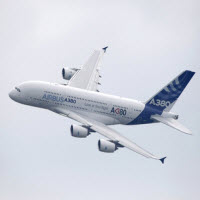Aircraft Accessibility: Is the Airbus 380 Disabled Friendly?
- Written by Roberto Castiglioni

In a world where growing numbers of disabled businessmen take the skies, Reduced Mobility Rights has taken a closer look at the Airbus 380 accessibility.
Manufactured by Airbus, the 380 aircraft is the largest jetliner in service. The double decker airliner boasts 50% more floor space than its direct competitor, the Boeing 747 Jumbo jet.
In its all-economy configuration, the A380 can seat over 850 people. However, most Airbus 380 currently in use features 3 class configuration (First class, Business class, Economy). Qantas Airways and Air France operate a 4 class configuration, also featuring Premium Economy.
The aircraft was designed to improve passengers' in-flight experience. Featuring a 50% quieter cabin environment than its rival 747, the A380 has lower pressurization levels and relaxing cabin lights among its signature features.
In all its configurations in service, the Airbus 380 has business class on the upper deck, making cabin accessibility a critical issue for disabled businessmen planning to fly with the mighty aircraft. Reduced Mobility Rights contacted a number of airlines operating the A380 aircraft, asking which procedure or method is used to help a quadriplegic passenger (WCHC) make his way to and from the business class cabin on the upper deck.
"At all Paris Charles de Gaulle terminals handling the A380, the jetways are equipped with an elevator to help Passengers with Reduced Mobility (PRM) access the jetway to the upper deck," a spokesperson for Air France said. "In the event of an elevator malfunction, jetway staff can use “SMax”, a motorized chair that can carry PRM up the 380’s internal stairs."
The French flag carrier currently operates a fleet of 8 A380 in a four class configuration. Air France guarantees the aircraft accessibility at all times.
"Boarding for wheel chair passengers to a seat on the upper deck of the A380 parked at a gate position is done via jet bridges that directly connects to the upper deck," a spokesperson for Lufthansa told Reduced Mobility Rights. "If necessary, the guest is then lifted into the seat
in the aircraft. In the event of a gate position without an upper bridge, the guest embarks/disembarks via the lower bridge and is then lifted to the upper deck by staff.
In the rare event that an A380 is parked at a tarmac position, we have a special high loader truck that is able to access the upper deck of the aircraft."
The German flag carrier currently operates a fleet of 10 Airbus 380 aircraft in a 3 cabin configuration. Like rival Air France, Lufthansa guarantees accessibility at all times.
"Boarding the Korean Air A380 is made straight into both the lower and upper deck - a bridge connects directly into the upper deck," a spokesperson for Korean Air said "This is an essential requirement for Korean Air's A380's at the airports it is used on - if the airport does not have a bridge that can connect into the upper deck the A380 cannot be used there."
The South Korea flag carrier currently operates a fleet of 6 A380. It remains unclear if the airline can guarantee accessibility to the upper deck of the aircraft at all times as no emergency procedure was mentioned to help disabled passengers in case an upper air bridge becomes unavailable.
"Singapore Airlines A380 aircraft feature Business Class on the upper deck but due to the fact we offer direct upper deck access from the aerobridge, the boarding process is the same as for any other aircraft type (for both able bodied and disabled customers)," a spokesperson for the Asian carrier told Reduced Mobility Rights.
Singapore Airlines operates a fleet of 19 A380 aircraft. Despite being the first ever operator of the superjumbo, the Asian carrier did not clarify if an emergency procedure is in place in case the upper air bridge becomes unavailable.
Emirates Airlines and Qantas were unavailable for comment. Airbus, the A380 manufacturer was also unavailable for comment.
About the author
Founder and Editor-in-Chief of Reduced Mobility Rights, Roberto Castiglioni is an expert of PRM regulations and handling procedures, and has personal experience as travelling partner and carer of a passenger with reduced mobility.
Roberto is a member of the Disability Working Group of the Civil Aviation Authority. He is also a member of the Easyjet Special Assistance Advisory Group. Chaired by David Blunkett MP, the independent advisory group esaag provides Easyjet with strategic guidance and practical advice on the evolving needs of passengers requiring special assistance.










